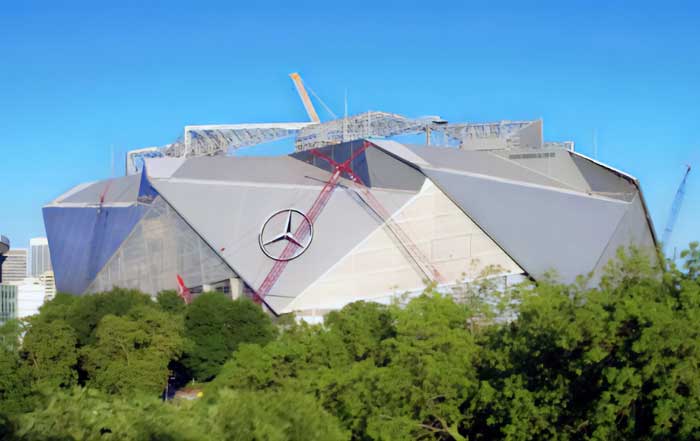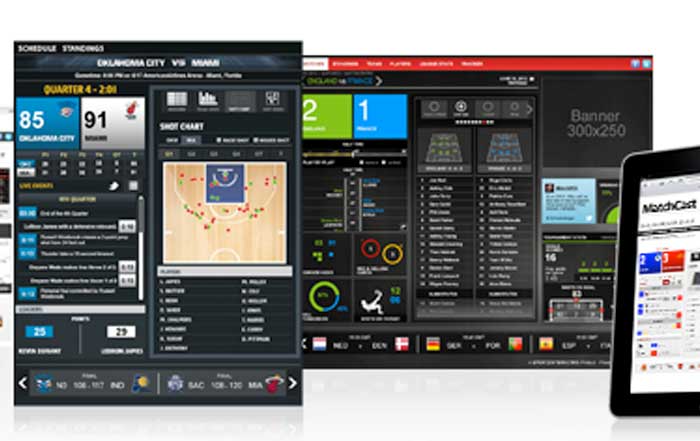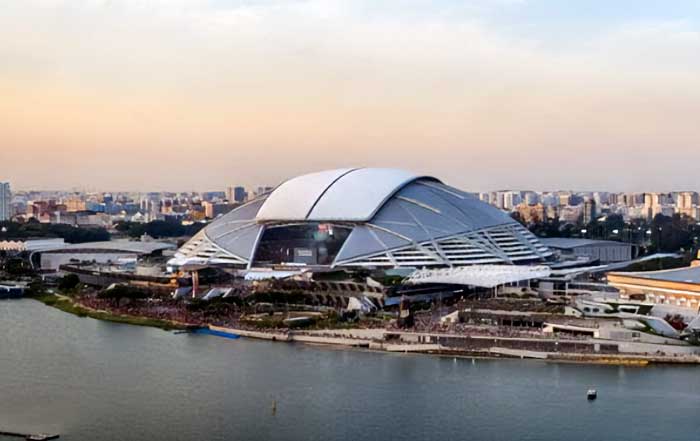The global sports industry has always been a reflection of society’s values, aspirations, and priorities. So here we are and sustainability has shifted from being a peripheral consideration to a central pillar guiding the strategies of leading sports organizations, brands, and event organizers. The shift is not just a matter of public image but a response to rising environmental concerns, stricter regulations, and the growing expectation from athletes, fans, and sponsors that the industry should take meaningful responsibility for its impact on the planet. Sports are uniquely positioned to inspire action, and the industry has become a testbed for innovative solutions in energy efficiency, waste reduction, sustainable infrastructure, and community engagement. For readers of Sportsyncr, the narrative of how sustainable practices are transforming the sports ecosystem offers not only insights into environmental progress but also into business opportunities, cultural change, and technological innovation.
The Environmental Footprint of Sports
Sports, in their many forms, require vast resources. From powering massive stadiums to transporting athletes and fans across continents, the environmental impact of the industry is immense. Studies suggest that global sporting events collectively contribute millions of tons of carbon emissions annually, primarily from travel, construction, and energy use. Events such as the FIFA World Cup and the Olympic Games have historically left large ecological footprints due to temporary venues, infrastructure expansion, and waste production. However, this impact has catalyzed a global movement within the sports community to realign operations with principles of sustainability and resilience.
The transition is further accelerated by growing public awareness. Fans are demanding more transparency and accountability from sports governing bodies, while governments are imposing stricter carbon reduction targets. For example, the European Union’s Green Deal and similar frameworks in the United States, Australia, and Japan are pushing clubs and event organizers to innovate and invest in environmentally responsible practices. As highlighted on Sportsyncr Environment, the call for sustainable operations is not just environmental—it is economic, cultural, and reputational.
Sustainable Stadiums and Sports Venues
One of the most visible transformations in the industry is the development of sustainable stadiums. Modern venues are designed with green architecture at their core, incorporating renewable energy systems, water recycling facilities, and eco-friendly construction materials. The Tottenham Hotspur Stadium in London, for example, has gained recognition for its energy efficiency, while the Mercedes-Benz Stadium in Atlanta became the first professional sports stadium in the United States to achieve LEED Platinum certification.
These sustainable stadiums often function as more than sports arenas; they are urban landmarks showcasing the possibilities of renewable technology and environmental design. Facilities integrate features such as rainwater harvesting systems, low-emission lighting, and solar panels, reducing operational costs and ensuring compliance with climate regulations. In regions such as Germany, Scandinavia, and Japan, stadiums are being reimagined as carbon-neutral hubs where sports, culture, and community coexist in alignment with environmental values.
Sustainability in venues also extends beyond construction. Waste reduction programs are increasingly embedded into match-day operations. Clubs and leagues now promote zero-plastic policies, compostable packaging, and extensive recycling initiatives. For fans, the experience of attending a match is being reshaped into one that aligns with broader values of climate responsibility, as seen in campaigns highlighted by Sportsyncr Culture.
Travel and Transportation: Tackling the Biggest Contributor
Travel has long been the most significant contributor to sports-related carbon emissions. With international tournaments, global fan bases, and corporate sponsorships, air travel and logistics form an unavoidable part of the industry. Yet innovative solutions are beginning to reshape how transportation is managed in sports.
Leagues and clubs are increasingly collaborating with rail companies and electric vehicle providers to promote greener fan travel. In Germany and the United Kingdom, partnerships with national rail operators allow discounted tickets for match-goers who opt for trains instead of flights or cars. Similarly, electric vehicle infrastructure is being expanded around stadiums, with organizations like Formula E serving as pioneers in showcasing how transportation can evolve sustainably.
Teams themselves are also embracing carbon offset programs and investing in sustainable aviation fuel. World Rugby, for instance, has announced initiatives to make tournaments carbon-neutral, integrating transportation planning as part of their strategy. Such efforts not only address emissions but also resonate with fans who are increasingly conscious of their personal carbon footprints. As covered on Sportsyncr World, sustainable mobility is shaping global sports beyond the playing field, influencing policy, fan behavior, and even sponsorship dynamics.
Renewable Energy in Sports Operations
Energy consumption in sports venues and operations is substantial, from lighting entire stadiums to powering digital broadcasting equipment. The move toward renewable energy has become one of the defining features of sustainable sports practices. Clubs across Spain, Italy, and Australia are investing in solar panels, wind energy, and geothermal systems to reduce dependence on fossil fuels.
A notable example is Forest Green Rovers, a football club in the United Kingdom hailed by FIFA as the "world’s greenest football club." Powered entirely by renewable energy and committed to vegan catering, the club has set a benchmark for how sustainability can be integrated into both operations and brand identity. This model demonstrates the role of smaller clubs in leading innovation that influences global standards.
Broadcasting companies, a critical component of the industry, are also making the transition. Organizations like Sky Sports and NBC Sports are adopting renewable-powered production studios and introducing eco-friendly broadcasting logistics. For readers of Sportsyncr Technology, this illustrates the intersection of innovation, media, and sustainability, where green energy becomes a competitive advantage.
Circular Economy and Sports Equipment
Another critical area of transformation is the adoption of circular economy principles in sports equipment and apparel. The industry has historically been dependent on resource-intensive production processes, but major brands are now rethinking their supply chains. Nike, Adidas, and Puma have expanded their use of recycled materials in sportswear and footwear, aligning with sustainability pledges that extend across their global operations.
Recycling initiatives are also being launched by leagues and clubs, offering fans opportunities to recycle old merchandise in exchange for discounts on new, sustainable alternatives. The use of biodegradable materials in equipment production, such as tennis balls and packaging, is growing. In Scandinavia and Japan, smaller local manufacturers are gaining traction by prioritizing eco-design, capturing environmentally conscious segments of the market.
This shift not only reduces waste but also creates a powerful narrative for brands to connect with consumers. By embracing sustainability, companies are positioning themselves as leaders in responsible innovation while appealing to the values of younger generations. As discussed on Sportsyncr Brands, the convergence of environmental responsibility and brand storytelling is reshaping the global sports marketplace.
🌱 Sustainable Sports Journey 🏟️
🏭Environmental Impact
Current Challenges
Global sporting events contribute millions of tons of carbon emissions annually from travel, construction, and energy use.
Growing Awareness
Fans demand transparency and accountability, while governments impose stricter carbon reduction targets.
Sustainable Practices Changing the Sports Industry
Athlete Advocacy and Sustainability
Athletes have become some of the most influential voices in promoting sustainability within the sports industry. With their global reach, star athletes use their platforms to raise awareness about environmental issues and encourage both fans and organizations to adopt greener practices. Figures such as Lewis Hamilton, who has spoken extensively about climate change and restructured his own lifestyle to align with eco-friendly values, exemplify how personal choices can drive industry-wide shifts. Similarly, Serena Williams and Novak Djokovic have engaged in campaigns that highlight the importance of reducing plastic use and supporting eco-conscious brands.
Athletes are also partnering with organizations to amplify climate initiatives. Through collaborations with groups like the United Nations Environment Programme (UNEP), athletes have become ambassadors for climate action, emphasizing the urgency of change. Their visibility brings authenticity to campaigns, inspiring fans to adjust personal habits and putting pressure on governing bodies to enforce stricter environmental standards. Readers on Sportsyncr Health can appreciate how athletes are blending performance, wellness, and advocacy, redefining their roles beyond the field.
Sponsorships and Brand Alignment
Sponsorship deals have long been central to the business of sports, but by 2025, sustainability has become a decisive factor in brand partnerships. Corporations recognize that fans are more discerning, preferring to support teams and athletes aligned with their own values. As a result, brands that fail to demonstrate environmental responsibility risk reputational damage when linked with high-profile sports organizations.
This shift is evident in major events where sponsorships are tied to sustainability goals. Adidas, for example, has pledged to make all of its products from recycled or sustainable materials by 2030, strengthening its credibility as a sponsor of eco-conscious sports initiatives. Coca-Cola, often criticized for plastic waste, has sought to reinvent its image by investing in sustainable packaging and promoting recycling campaigns during international tournaments.
For leagues and clubs, sustainability-driven sponsorships present both an opportunity and a challenge. Partnerships with companies that lead in green innovation allow organizations to expand their impact, while also securing revenue streams that align with long-term goals. Coverage on Sportsyncr Sponsorship illustrates how these sponsorship strategies are reshaping the financial and ethical landscape of sports worldwide.
Community Engagement and Local Impact
Sports organizations increasingly recognize that sustainability is not just about reducing global emissions but also about building stronger connections with local communities. Stadiums and clubs are now designed to provide year-round value to their neighborhoods, serving as hubs for community-driven environmental programs. Initiatives include urban gardening projects, recycling campaigns, and educational workshops for schools, where children learn the importance of environmental stewardship through their favorite sports teams.
In South Africa, rugby clubs have been instrumental in promoting water conservation during periods of drought, using their platforms to influence local behavior. In Brazil, football academies have partnered with NGOs to teach youth about protecting the Amazon rainforest, linking environmental education with national pride in football. This demonstrates that sports can extend their influence far beyond competition, acting as vehicles for social and cultural transformation.
By engaging directly with communities, sports organizations also reinforce loyalty among fans who see their clubs as forces for positive change. Stories like these, often highlighted on Sportsyncr Social, show how grassroots impact complements global sustainability campaigns, creating a multi-level approach to change.
Policy Frameworks and Global Commitments
The role of international policy in shaping the sports industry’s sustainability journey cannot be overstated. Global agreements such as the Paris Climate Accord have encouraged countries to implement stricter carbon reduction strategies, directly influencing how national sports bodies operate. Events like the Olympic Games and the FIFA World Cup are now required to demonstrate compliance with sustainability guidelines, with host cities committing to renewable energy targets, eco-friendly infrastructure, and legacy projects that extend benefits beyond the event.
In Europe, the UEFA EURO tournaments have integrated sustainability reporting into their frameworks, requiring organizers to measure and disclose carbon emissions, waste management outcomes, and social impact initiatives. Similarly, Australia’s federal government has set clear guidelines for sustainable sports facility construction, tying funding to environmental benchmarks.
These frameworks establish accountability and transparency, ensuring that the promises made by sports organizations translate into measurable results. For readers following Sportsyncr Business, it is clear that compliance with policy is not only about regulations but also about seizing opportunities to innovate and attract long-term investment.
Technology Driving Sustainable Sports
Technology is playing a crucial role in accelerating sustainable practices within the sports industry. Digital tools are enabling organizations to monitor energy consumption, optimize logistics, and reduce waste with greater precision. For example, smart stadium technologies powered by IoT sensors track water and electricity usage in real time, helping operators identify inefficiencies and minimize environmental impact.
Blockchain is being adopted to ensure transparency in sustainability reporting. Clubs and event organizers can use blockchain systems to track carbon offsets, renewable energy purchases, and supply chain compliance, providing verifiable proof of their commitments. This addresses the growing demand from fans and regulators for trustworthy data.
Artificial intelligence also plays a role, particularly in analyzing transportation logistics and predicting environmental outcomes of large-scale events. By simulating fan travel patterns or waste generation scenarios, AI helps organizations implement targeted strategies that maximize sustainability outcomes. These innovations are central to the future of sports operations, as explored in detail on Sportsyncr Technology.
Sustainable Practices in Global Regions
Sustainability in sports is being embraced differently across global regions, reflecting cultural priorities, economic structures, and political will.
In Europe, sports organizations are at the forefront of integrating sustainability into operations. Clubs in Germany, Sweden, and Denmark are widely recognized for carbon-neutral stadiums and progressive environmental policies. In the United Kingdom, grassroots programs promote renewable energy adoption at local sports clubs.
In North America, leagues like the NBA and NFL are embedding sustainability into their branding strategies, while Canadian sports organizations emphasize the link between environmental protection and national identity. Australia and New Zealand have become leaders in eco-conscious sports tourism, ensuring that large-scale events minimize their impact on natural landscapes.
In Asia, momentum is growing as countries like Japan, South Korea, and Singapore leverage technology to achieve sustainable goals. Meanwhile, China has invested heavily in renewable energy-powered sports venues, seeking to align with broader national climate objectives.
In Africa and South America, sports organizations face unique challenges due to resource constraints but are increasingly aligning with NGOs and international bodies to promote sustainability. Initiatives in Brazil, South Africa, and Kenya showcase innovative grassroots approaches that emphasize community empowerment and environmental awareness.
Coverage on Sportsyncr World demonstrates how these regional differences create a diverse global landscape, where sustainability in sports reflects both universal values and localized solutions.
Sustainable Practices Changing the Sports Industry
Sustainable Sports Media and Broadcasting
Media has always been the lifeblood of sports, shaping global narratives, influencing fan engagement, and generating billions in revenue. By 2025, sustainability has also become a priority in how sports media operates, with broadcasters and digital platforms embedding eco-conscious practices into production and distribution. Traditional broadcasting requires significant energy, from powering camera equipment to transporting crews across continents. Now, companies like Sky Sports and ESPN are adopting renewable energy in production facilities, reducing emissions by investing in virtual broadcasting technologies, and streamlining operations through cloud-based solutions.
The rise of remote production has proven to be one of the most significant innovations. Rather than deploying hundreds of staff to international events, broadcasters use centralized hubs where technicians manage feeds remotely. This reduces the need for air travel, lowers operational costs, and minimizes the environmental footprint of live sports. Additionally, major networks are redesigning their digital platforms to reduce energy consumption by optimizing servers, using green data centers, and investing in carbon offset programs. For readers of Sportsyncr News, these changes highlight how broadcasting is not only adapting to technological disruption but also aligning with sustainability goals.
Eco-Conscious Fan Engagement
Fans are central to the sustainability transformation in sports. Organizations now understand that eco-friendly initiatives succeed only when supported by the people who attend games, purchase merchandise, and consume sports media. Clubs and event organizers are encouraging fans to participate in green campaigns, from carpooling to games in electric vehicles to reducing single-use plastics inside stadiums.
One of the most impactful shifts is the promotion of sustainable food choices. At major sporting venues across the United States, United Kingdom, and Australia, plant-based food options have become mainstream, often promoted by star athletes who advocate for healthier and environmentally friendly diets. Campaigns to encourage reusable drinkware, digital ticketing, and zero-waste match days are also gaining traction. Fans increasingly expect their sports experience to reflect their values, and organizations are responding by making eco-conscious behavior part of the event itself.
Digital engagement has amplified these efforts. Through apps and online platforms, fans can track the carbon savings of their choices, compete in challenges promoting sustainability, and receive rewards for environmentally friendly behavior. This integration of technology, culture, and sport is creating a participatory model of climate responsibility that resonates strongly with younger generations. Coverage on Sportsyncr Culture shows how this cultural shift is as important as infrastructure or policy in driving meaningful change.
Data-Driven Accountability
Accountability is central to ensuring that sustainability in sports goes beyond marketing slogans. Organizations are increasingly adopting transparent, data-driven approaches to measure and disclose their environmental impact. Annual sustainability reports are now standard practice for leagues, clubs, and global event organizers, often verified by independent third parties.
Blockchain technology has emerged as a powerful tool for creating immutable records of carbon offset purchases, supply chain compliance, and renewable energy use. This technology not only builds trust among fans and stakeholders but also prevents accusations of greenwashing. For example, UEFA has piloted blockchain systems to track the environmental performance of tournaments, ensuring that sustainability claims are backed by verifiable data.
Artificial intelligence also supports accountability by analyzing real-time data on energy use, waste generation, and transportation patterns during events. AI-driven insights allow organizers to adjust strategies mid-event, ensuring that goals are met. Readers on Sportsyncr Science can see how the intersection of technology and sustainability is creating a new model of governance within the sports industry, where every action can be quantified, tracked, and improved upon.
Business Models Shaped by Sustainability
Sustainability is no longer just a cost for the sports industry—it has become a driver of business innovation and long-term profitability. Companies that invest in sustainable practices often realize reduced operational expenses, enhanced brand value, and stronger connections with socially conscious consumers. This is particularly true for sports apparel and equipment companies, where the move toward recycled and eco-friendly products has captured the loyalty of environmentally aware customers.
Franchises and leagues are also discovering new revenue streams by aligning with green sponsors and offering sustainability-related experiences. Eco-tourism packages linked to sporting events, renewable energy partnerships, and carbon-offset fan programs are examples of initiatives that combine business opportunity with environmental responsibility. Governments, recognizing the potential of sports to drive sustainability, are offering incentives for clubs that meet carbon-neutral targets, further strengthening the business case for green investment.
The shift is clear: organizations that fail to embrace sustainability risk losing competitiveness in a rapidly changing global marketplace. Articles on Sportsyncr Business regularly explore how sustainability is shaping everything from sponsorship structures to long-term investment strategies in the sports industry.
The Role of Global Sports Organizations
Large governing bodies such as the International Olympic Committee (IOC), FIFA, and the International Paralympic Committee (IPC) are critical in setting standards for sustainability. Their influence extends across nations, shaping not just how events are managed but also how local clubs and federations operate. The IOC’s Olympic Agenda 2020+5 placed sustainability at the center of its strategy, requiring host cities to demonstrate long-term environmental benefits and avoid the construction of unnecessary venues. Similarly, FIFA has pledged that all future World Cups will prioritize carbon-neutral operations.
These organizations are also promoting knowledge sharing among member associations, ensuring that smaller countries and clubs can access resources and best practices. By leveraging their global platforms, they inspire both governments and fans to take environmental responsibility seriously. Coverage on Sportsyncr Sports emphasizes how these organizations are not only guardians of competition but also stewards of global sustainability commitments.
Sustainable Practices Changing the Sports Industry
Visionary Projects and Future Innovations
The sports industry, by 2025, is not only adopting sustainable practices but actively experimenting with visionary projects that anticipate future challenges. These projects are blending architecture, digital transformation, and environmental science to build a foundation for the next generation of sporting experiences.
One groundbreaking example is the concept of net-positive stadiums, which do not merely minimize their environmental impact but actively contribute back to the grid by generating more renewable energy than they consume. Pilot projects in the Netherlands and Scandinavia showcase solar- and wind-powered venues that double as community energy providers. Beyond stadiums, research is underway to develop carbon-absorbing materials for sports infrastructure, integrating cutting-edge science to capture emissions directly from facilities.
In addition, sports organizations are exploring digital twin technology to simulate environmental scenarios before construction or event planning begins. By creating a virtual model of a stadium or tournament, planners can identify inefficiencies, optimize design for sustainability, and avoid costly mistakes. Readers of Sportsyncr Technology will recognize how these innovations are blurring the line between sports operations and advanced science, ensuring a smarter and greener future.
Cultural Shifts: The Role of Fans and Society
Perhaps the most profound transformation lies not in technology or infrastructure, but in the cultural role sports play in advancing sustainability. Sports have always served as a mirror of societal priorities, and the growing expectation that athletes, clubs, and sponsors act responsibly reflects a global shift in values. Fans increasingly see their participation in sports as part of a broader lifestyle choice that extends to diet, travel, and consumer behavior.
The symbolic power of sports to bring people together is being leveraged to spread environmental awareness on a global scale. Events like Earth Day games, carbon-neutral marathons, and international awareness campaigns are aligning sports calendars with global sustainability milestones. In Japan and South Korea, cultural traditions of respect for nature are being woven into modern sporting experiences, strengthening the connection between heritage and innovation.
As explored on Sportsyncr Culture, these cultural dynamics illustrate that sustainability in sports is not just about what happens on the field but how entire societies express values of responsibility, fairness, and respect for future generations through their favorite games.
Jobs and Careers in Sustainable Sports
The growth of sustainable practices in sports has also created a new frontier for careers. Sustainability officers, environmental engineers, and data analysts are now as vital to sports organizations as coaches and scouts. From overseeing renewable energy projects to implementing waste management systems, these professionals are shaping the future of the industry while building careers that merge passion for sports with a commitment to global responsibility.
In the United States and Europe, universities are offering specialized programs in sports sustainability, preparing graduates for roles that did not exist a decade ago. At the same time, large sports organizations are actively recruiting talent with expertise in ESG (Environmental, Social, Governance) compliance and green innovation. Emerging markets such as Brazil, India, and South Africa are also witnessing a surge in local initiatives where young professionals lead sustainability projects tied to community sports development.
The demand for such expertise is reflected in global job trends, as featured on Sportsyncr Jobs, where sustainability-related roles in sports are expected to grow significantly through 2030. This demonstrates how environmental responsibility is not only changing the game but also shaping career paths worldwide.
Brands and Consumer Responsibility
Sports brands are uniquely positioned to influence both fans and athletes when it comes to sustainability. Companies like Nike, Adidas, and Under Armour are leveraging their global visibility to promote recycled materials, carbon-neutral supply chains, and ethical labor practices. By aligning their marketing strategies with sustainability goals, they are capturing new consumer segments that prioritize responsibility as much as performance.
Emerging eco-focused sports brands are also gaining traction, especially in markets like Germany, Canada, and Australia, where consumers are willing to pay premiums for sustainable alternatives. For example, apparel lines made entirely from ocean plastics or biodegradable fibers are becoming mainstream, supported by endorsements from leading athletes. This signals a broader movement in consumer culture, where purchasing decisions in sportswear are increasingly tied to environmental awareness.
Coverage on Sportsyncr Brands highlights how these shifts in consumer behavior are pushing even the most established corporations to innovate rapidly, ensuring that sustainability becomes integral to the identity of sports brands worldwide.
The Road to 2030 and Beyond
Looking ahead, the trajectory of sustainability in sports points toward a future where environmental responsibility is inseparable from athletic excellence and fan engagement. By 2030, experts predict that most international sporting events will be required to achieve net-zero emissions, with strict auditing frameworks to ensure compliance. Stadiums will likely evolve into multi-functional eco-hubs that serve communities far beyond match days, acting as centers for renewable energy, public education, and cultural events.
Technology will continue to drive efficiency, with artificial intelligence, blockchain, and smart materials shaping both planning and execution. Virtual reality could reduce the need for international travel by offering immersive fan experiences at home, while global cooperation among governing bodies will establish standardized benchmarks for sustainability. For fans, this future will mean that supporting a team or attending an event also signifies participating in a broader movement to safeguard the planet.
On Sportsyncr Environment, it is evident that the sports industry is not just adapting to climate challenges but positioning itself as a leader in demonstrating how entertainment, business, and cultural life can embrace sustainability without compromising passion or performance.
Conclusion
Sustainable practices are no longer optional within the sports industry; they are defining the future of how the sector operates, inspires, and thrives. From carbon-neutral stadiums and eco-conscious sponsorships to athlete advocacy and data-driven accountability, the transformation is reshaping every dimension of sports. The shift extends beyond environmental gains, creating new opportunities for careers, brands, and communities while aligning sports with the values of fairness, innovation, and global responsibility.
For fans, athletes, and organizations alike, the journey toward sustainability is a shared endeavor, one that underscores the power of sports to unite people and drive meaningful change. The next decade will test the industry’s commitment, but it will also demonstrate how the world’s most beloved games can play a decisive role in building a greener and more equitable future.








